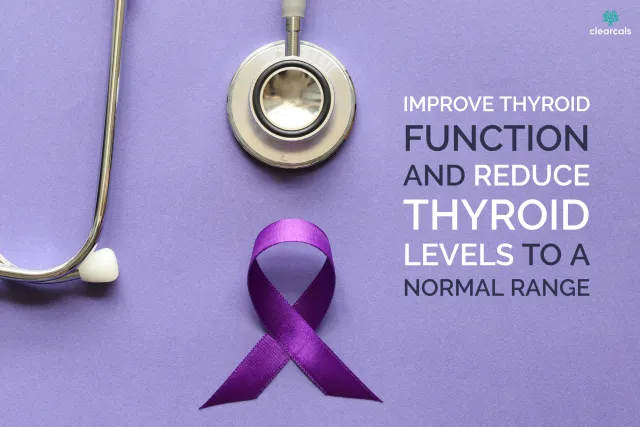Looking for a Personalized Diet Plan?
Embrace an Insulin Resistance Diet Indian Style

Insulin resistance is a condition where the body’s cells become less responsive to insulin, a hormone that helps glucose enter cells for energy. In response, the pancreas produces more insulin to compensate, leading to elevated insulin levels.
Over time, this imbalance can result in serious health issues like prediabetes, Type 2 diabetes, PCOS, and cardiovascular disease.
The Hint app provides tools to help manage and reverse insulin resistance, including personalized diet plans available through Hint Pro and Hint Premium subscriptions.
With the guidance of expert dietitians, you can adopt an effective insulin-resistance diet while leveraging app features like Pro Workouts and calorie tracking to regain control of your health.
What is Insulin Resistance?
Insulin resistance occurs when insulin becomes less effective at lowering blood sugar levels, forcing the pancreas to produce excess insulin. Left unchecked, it can lead to:
- Hyperinsulinemia (excess insulin in the blood).
- Fatigue, weight gain, and other metabolic issues.
- Increased risk of chronic diseases like diabetes and heart conditions.
This condition often goes undiagnosed because blood sugar levels may remain normal in the early stages. However, advanced tests like the HOMA-IR test can accurately measure insulin sensitivity.
Insulin Resistance Symptoms
Common symptoms include:
- Fatigue and low energy.
- Increased abdominal fat.
- Sugar cravings and difficulty losing weight.
- Skin tags or dark patches on the skin (acanthosis nigricans).
- Irregular menstrual cycles (especially in women with PCOS).
If you experience these symptoms, consulting a dietitian through Hint Premium can help you manage the condition effectively.
How is Insulin Resistance Diagnosed?
Blood Tests
- HbA1c levels: High levels can indicate insulin resistance.
- Adiponectin and proinsulin levels: Used as markers in some cases.
HOMA-IR Test
- Calculated using the formula: HOMA-IR=Fasting Plasma Glucose (mg/dL)×Fasting Serum Insulin (µIU/mL)/22.5
- A value greater than 2.5 suggests insulin resistance.
The Hint app’s dietitian support through Hint Premium can guide you through interpreting these results and creating a treatment plan.
Insulin Resistance Diet: The Foundation of Reversal
A nutrition-focused approach is the most effective way to reverse insulin resistance. The Hint app offers personalized insulin-resistance diet Indian plans that emphasize:
- Low-glycemic foods: Whole grains, legumes, and non-starchy vegetables.
- High-fiber meals: Oats, lentils, and chia seeds to slow glucose absorption.
- Healthy fats: Avocado, nuts, and olive oil to support hormonal health.
- Lean proteins: Paneer, fish, or tofu to stabilize blood sugar levels.
Through Hint Premium, expert dietitians create customized meal plans, including an insulin resistance Mediterranean diet or insulin-resistance meal plan PDF for easy implementation.
How to Overcome Insulin Resistance
1. Adopt a Balanced Diet
- Focus on nutrient-dense foods that improve insulin sensitivity.
- Avoid refined carbs and sugary beverages.
2. Exercise Regularly
- Use the Pro Workouts feature in the Hint app to access over 300+ routines.
- Strength training and cardio improve glucose metabolism and aid in weight loss.
3. Track Calories and Macronutrients
The Hint app’s calorie tracking ensures you maintain a calorie deficit if needed, supporting fat loss and insulin sensitivity.
4. Consult a Dietitian
Hint Premium connects you with dietitians who design personalized plans tailored to your lifestyle, preferences, and medical needs.
Insulin Resistance Treatments
In addition to dietary changes, other treatments include:
- Lifestyle Modifications: Incorporating daily exercise and stress management techniques.
- Medical Interventions: For advanced cases, medications like Metformin may be prescribed.
Hint Premium dietitians work alongside your healthcare provider to ensure your treatment plan is both comprehensive and sustainable.
Insulin Resistance and Skin Tags
Skin tags, or small benign growths, are a common symptom of insulin resistance. They often appear in areas of friction, like the neck and underarms. Managing insulin resistance through a sugar-controlled diet and regular exercise can reduce the appearance of skin tags and improve overall skin health.

The Role of Hint App in Reversing Insulin Resistance
1. Personalized Diet Plans
- Through Hint Pro, you receive a scientifically designed diet plan tailored to your insulin resistance needs.
- Hint Premium offers customized meal plans, including a vegetarian insulin resistance diet Indian version or a Mediterranean-inspired option.
2. Pro Workouts
- Access structured exercise routines that boost insulin sensitivity and burn calories.
3. Calorie and Nutrition Tracking
- Monitor your calorie intake, macronutrient distribution, and progress toward your health goals.
How to Calculate Insulin Resistance?
To calculate insulin resistance, use the HOMA-IR formula:
HOMA-IR=Fasting Plasma Glucose (mg/dL)×Fasting Serum Insulin (µIU/mL)/22.5
Tools like the HOMA-IR calculator or professional support from Hint Premium dietitians can help interpret your results accurately.
Conclusion
Reversing insulin resistance is achievable with the right tools and guidance. The Hint app empowers you to take control of your health through:
- Personalized diet plans with Hint Pro and Hint Premium.
- Pro Workouts to improve fitness and metabolic health.
- Expert dietitian support to manage insulin resistance and related conditions effectively.
Start your journey toward reversing insulin resistance today with the Hint app—your partner in creating a healthier, more vibrant future.






